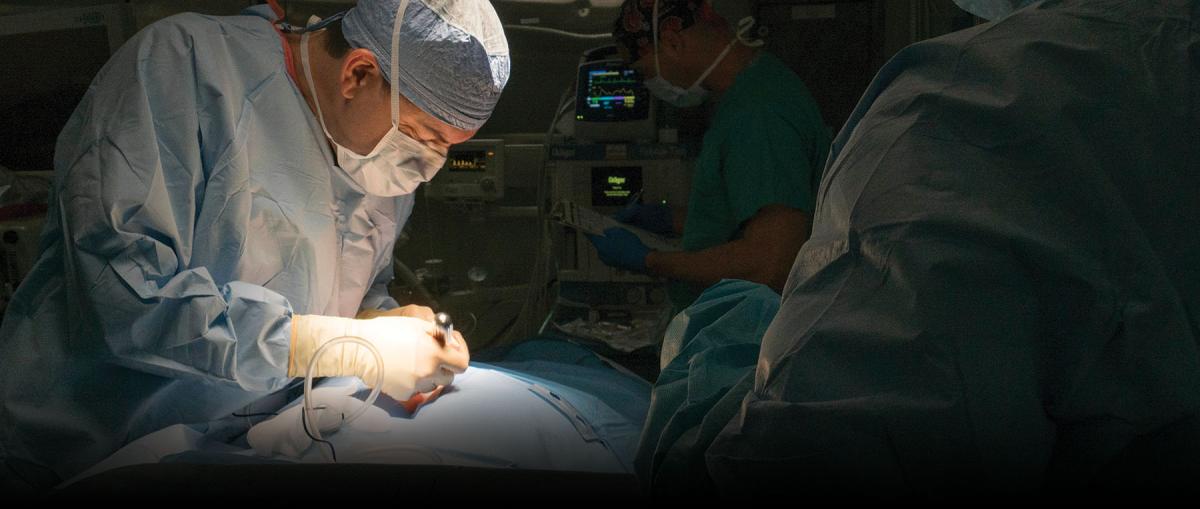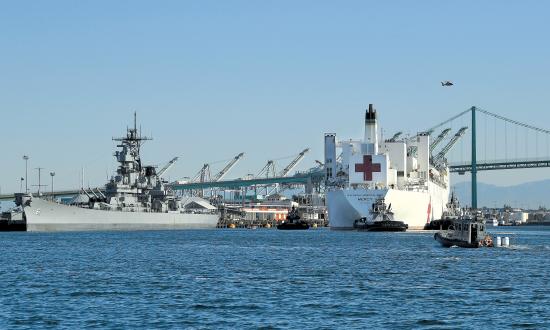The April and May 2020 issues of Proceedings contained several thought-provoking articles highlighting the challenges facing Navy Medicine as the Medical Corps responds to new operational imperatives articulated by the Chief of Naval Operations and Commandant of the Marine Corps. The Navy medical department must build on its strong foundation of clinical training and direct operational support at the unit level to ensure it can successfully execute the Medical Corps’ mission to support the fleet in any operational scenario. As Navy Medicine adjusts for the future, mass casualty care following an attack on ships at sea assumes even greater importance.
The speed and lethality of new weaponry and the minimal warning of open conflict with adversaries such as the People’s Liberation Army Navy (PLAN) will not allow the luxury of months of preparation for combat casualty care that the Medical Corps has had in the past three decades. For example, during the First Gulf War, Commander, Seventh Fleet, assumed additional responsibilities as Commander, U.S. Naval Forces Central Command, augmenting his staff to support this new role. There was neither room for the requisite medical command staff on the USS Blue Ridge (LCC-19), nor a refined medical annex in the operational plan to support such a huge undertaking. These deficiencies required rapidly standing up the requisite medical support staff and the land- and sea-based medical support facilities.
In a worst-case scenario, the current fleet-based medical staffs would also be overwhelmed, particularly if their preferred methods of medical evaluation and resupply or the designated casualty receiving ship was unavailable. The Gulf War also demonstrated that despite the mandates of the Geneva Conventions, casualty receiving ships could be vulnerable to attack, by either design or accident.
With establishment of the Defense Health Agency, Navy Medicine has articulated the Medical Corps’ imperatives for training and readiness to support the operational forces. In April 2019, Former Surgeon General of the Navy Vice Admiral Forrest Faison testified on Navy Medicine’s role in the Defense Health program to the Senate Defense Appropriations Subcommittee. He addressed the challenges of structuring the Medical Corps to support “multi-dimensional battle; injury extent and severity, and ensuring the force had the skills required to provide for the full spectrum of care to the wounded.” What appears missing in his testimony was developing the knowledge and skills of Navy medical officers assigned to senior operational staffs.
The Surface Warfare Medical Institute’s 2016 Fleet Medical Packet Reference includes a chapter titled, “Required Operational Capability and the Projected Operational Environment.” It is an excellent field guide for operational medical staffs. However, it comes with a caveat––the sentence addressing the carrier strike group: “The carrier’s medical department serves . . . as the primary Medevac for other vessels within the CSG.” This simple statement could lead all concerned to embrace a false premise. Assuming the aircraft carrier, while carrying out strike operations, would interrupt its primary warfighting mission to be a casualty receiving and treatment ship is fraught with danger. Furthermore, even the medical facilities on board the USS Gerald R. Ford (CVN-78), while impressive, would easily be inundated, overwhelming the staff. Of the eight medical officers and 30 corpsmen on board, only one is a surgeon and one an anesthesiologist.
Relearning Past Lessons
In 1990, Commander, Seventh Fleet, sent a message to Commander, U.S. Pacific Fleet, titled “Medical Support for Battle Force Operations” that addressed specific shortfalls in mass casualty care to the battle force identified during Pacific Exercise (PacEx) 89 a year prior. Seventh Fleet used available ship-damage computer programing to estimate probable casualties to a ship’s crew resulting from strikes from various weapon systems. The results were grim, even presuming the ship’s medical department personnel had survived.
PacEx 1989 mass casualty drills demonstrated the need to modify the authorized medical allowance list (AMAL—medical equipment and supplies on board ships) to increase critical wartime and peacetime treatment capability for burns and trauma. The British experience in the Falklands and the 1987 USS Stark (FFG-31) incident indicate that more than 33 percent of casualties in modern war at sea are burns. Following a small-boat attack, the USS Cole (DDG-67) sustained 81 casualties—a mix of orthopedic, ophthalmologic, burn, and inhalation.
Navy Medicine literature is replete with excellent studies on shipboard injury. One, in the May 1989 issue of Military Medicine, addressed the casualties of the USS Franklin (CV-13) in May 1945 and those of the Stark. In each, 25 percent of the crew was injured. Navy leaders should revisit the damage and injuries sustained in the kamikaze attacks in the Pacific theater, as they will resemble those that can be caused by today’s enemy weapon systems.
The medical supply inventory on board the USS Francis Hammond
(FF-1067) during a Seventh Fleet exercise was 110 percent of the AMAL requirement to treat five burn casualties. The ship could have supported this casualty load for approximately three hours without resupply, provided battle damage did not destroy or deny access to the ship’s medical supplies. Further analysis of simulated use of medical supplies revealed that 100 percent of intravenous fluids would have been depleted in six hours, and approximately 75 percent of the battle dressings, without factoring in amputees and severe penetrating wounds, would have been consumed within hours. The Francis Hammond’s supply of medical oxygen would also have been depleted.
The Urgency of Now
Seventh Fleet’s analysis and its endorsements identified and made specific recommendations to address mass casualty care, at-sea evacuation, medical regulation, medical unit augmentation, authorized medical allowance, medical resupply, blood products, shore casualty receiving/personnel processing, joint host-nation support, and the fallacy of assigning the carrier as the primary casualty and receiving ship. To these ten areas should be added the number of operating and treatment rooms required for a worst-case scenario and medical personnel’s mental and physical fatigue resulting from caring for their shipmates in a mass-casualty environment.
These significant issues may not be fully addressed without participation at the appropriate levels in the fleet and at the Navy Medical Department. With the complexity of the tasks facing the Navy and Marine Corps, frequently with competing interests, communication channels must remain open. Unfortunately, in the broad scope of planning, the Navy Medical Department is often an afterthought until its services are needed.
Navy Medicine and the unrestricted line warfare communities must move beyond thinking of operational readiness strictly in terms of clinical competence and the design and staffing of a ship’s medical company in a peacetime environment. Training and ship design, such as that coming online with the new expeditionary fast transport-15 Flight II ambulance transport, must move beyond thinking in terms of routine day-to-day operations and initial warfare specialty/type commander training to a broader operational focus captured in the fleet’s major operational plans. Historically, training opportunities for medical personnel have been limited and training for their senior unrestricted line commanders virtually nonexistent.
Exercise Kernel Blitz 95, a brigade-sized Marine amphibious exercise, is a model of how to integrate the Navy’s medical and warfare communities. The Surgeon General and Pacific Fleet Surgeon’s stated objectives of this exercise were: Validate the medical support requirements outlined in the fleet’s major regional contingency operational plans, maximize training for medical personnel, integrate Navy medical planning and execution requirements with those of the unrestricted line, and introduce advanced medical information technologies. Each component of the medical exercise structure was defined by specific goals, required resources, execution, and a defined evaluation process permitting the evaluation of medical doctrine development and the coordination of fleet readiness initiatives with the Bureau of Navy Medicine and the Chief of Naval Operations staff in Washington.
That exercise was 26 years ago. Years of land-focused combat since then reduced the urgency of addressing these issues. Now, the prospect of a major at-sea conflict is getting renewed attention. The Navy cannot afford to wait to address these issues after it has begun.






